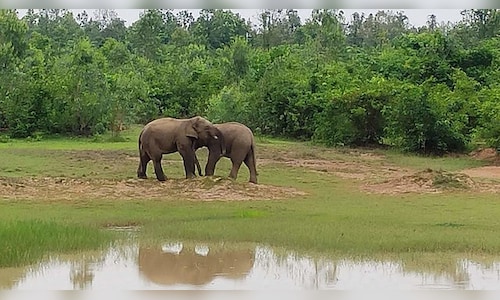According to the PTI report, minutes from a high-level meeting chaired by the state’s Chief Secretary on May 30 indicate Odisha’s plans to modify Eco-Sensitive Zone (ESZ) notifications, particularly the clauses that restrict construction and commercial activities near protected areas. The state intends to seek central government approval for the repurposing of forest land for non-site-specific tourism infrastructure and to revisit Coastal Regulation Zone (CRZ) classifications to facilitate further development along its coastline.
ESZs are designated buffer zones encircling national parks, wildlife sanctuaries, and forests, created to alleviate the adverse impacts of human activities on delicate ecosystems. While regulated activities like agriculture, eco-tourism, and renewable energy generation are allowed, construction and industrial pursuits are typically restricted.
Nevertheless, the Odisha government seems to be advocating a more lenient interpretation of these regulations. The minutes assert that the “no construction/no commercial activity” clause in current ESZ notifications “do not accurately represent the enabling spirit” of the Centre’s 2011 guidelines. Officials have suggested aligning ESZ notifications with the state’s tourism master plan, in consultation with the Department of Tourism.
Also read | Odisha aiming to become an adventure tourism hotspot to attract younger travelers
The Odisha Coastal Zone Management Authority has been tasked with re-evaluating CRZ classifications in areas identified as having “extremely high tourism potential”.
To support these initiatives, the state government has established an empowered committee, led by the Additional Chief Secretary of the Forest and Environment Department, to manage tourism-related projects and clearances in forest and ESZ areas. However, the committee does not include independent ecologists, wildlife scientists, or representatives from tribal communities, raising concerns among experts, as noted in the PTI report.
“This initiative is certainly detrimental to conservation efforts and is likely to exacerbate human-wildlife conflicts, similar to the situation in Dhenkanal, where human-elephant encounters have escalated over the years,” commented BK Singh, a retired Indian Forest Service officer, as cited by PTI.
Also read | Debrigarh wildlife sanctuary in Odisha is the top ecotourism destination in India, states Amitabh Kant
Prakriti Srivastava, another retired Indian Forest Service officer and co-author of India’s ESZ guidelines, expressed that the proposed alterations could fundamentally undermine the objectives of these zones. “In a state like Odisha, where 149 individuals lost their lives in elephant encounters in 2023–24, the effort to limit ESZs and advocate for commercial activities denounces double standards and places both people and wildlife at risk,” she said.
Legal experts argue that these proposals conflict with both national and judicial mandates. “The state functions as the constitutional trustee of forests and wildlife, with a duty to protect these natural treasures,” stated Debadityo Sinha, Lead – Climate and Ecosystems at the Vidhi Centre for Legal Policy.
“A guideline that merely urges states to ‘consider’ the tourism master plan when notifying ESZs raises significant concerns. It suggests that economic motivations may take precedence over ecological responsibilities,” he added.
Sinha pointed out that the intention to ease construction regulations in ESZs contradicts the Supreme Court’s 2022 directive, which calls for a minimum one-kilometre buffer zone around all protected areas. Furthermore, the Wildlife Protection Act, 1972, restricts commercial development within sanctuaries unless it directly benefits conservation or low-impact tourism. Any diversion of forest land would necessitate approval under the Van (Sanrakshan Evam Samvardhan) Adhiniyam, 1980, and consent from local Gram Sabhas as per the Forest Rights Act, 2006.
Critics have emphasized that the May 30 meeting may have overlooked crucial environmental safeguards such as carrying capacity assessments, environmental impact evaluations, and scientific studies regarding the ecological consequences of tourism.
“These ambiguous and arbitrary administrative directives not only contravene statutory mandates under forest and wildlife regulations, but they also risk establishing a perilous precedent,” Sinha cautioned. “They threaten Odisha’s rich biodiversity and undermine both national and international commitments.”



